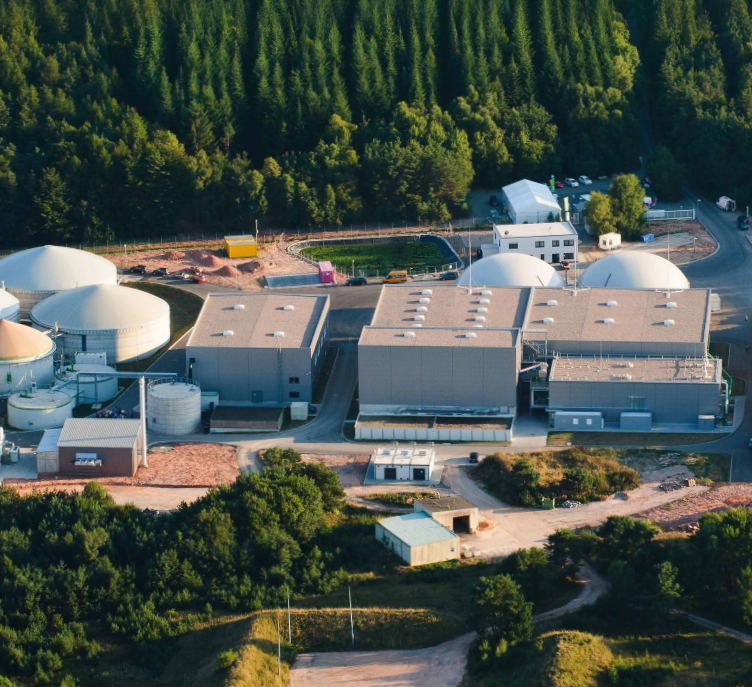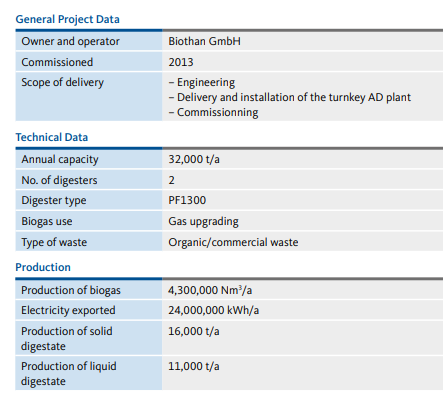Fulda / Germany
Fulda / Germany
Fulda – Kompogas® Fermentation Technology in Action in a Bioenergy Park

The Finkenberg bioenergy park near Fulda is the first facility in Germany to combine composting with dry and wet fermentation and perform all four phases of organic waste treatment – waste recovery, fermentation, gas upgrading, and grid injection – on one site. Two Kompogas® concrete digesters ensure efficient dry fermentation.
Biogas from Dry and Wet Fermentation
The Finkenberg plant recovers biogas and organic fertilizer from biogenic waste using specific processes depending on the properties of the input material. Green and organic waste are dry fermented in two Kompogas® digesters running in parallel. Up to 32,000 tonnes of segregated organic waste are processed in this way every year. The input material is shredded and sieved before being fed into the two digesters. The fermentation process, which takes around two weeks at 55°C, produces carbon-neutral biogas and high-grade agricultural fertilizer in solid and liquid form. Meanwhile biogas is recovered from food waste and cattle slurry using wet fermentation technology. The two streams of gas are combined and upgraded into pure bio-methane, which is fed into the local natural gas network.
Regional Energy Strategy
The Finkenberg project is firmly rooted in the region. Commercial waste, slurry, and organic waste from the Fulda district are used as fermentation substrate. The highly efficient plant is operated by Biothan GmbH, a subsidiary of gas and water utility Gas-und Wasserversorgung Osthessen GmbH and what is now RhönEnergie Fulda GmbH. The latter markets the biogas produced by the plant largely in the area served by its own grid. The digestate remaining at the end of the gas generation process makes a high-quality, low-odor fertilizer that is much in demand with local farmers.
Unique Location
Until 1992, American troops were stationed on Finkenberg hill. Only once they had left did the local authority decide to repurpose the site. The elevation and surrounding woods make it the ideal location for an organic treatment plant: it is hidden from direct view, and far enough away from residential areas for any noise and odors not to be a problem. The hill is located in the middle of the catchment area, and thanks to its previous function already had key infrastructure such as access roads, electricity and water, and the line now used to feed gas into the natural gas grid.
